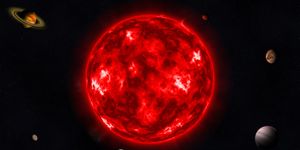The brain is arguably the most complex structure in the universe. Thus, it's not surprising that the mechanisms behind depression are not fully understood.
Now, researchers have uncovered how the habenula functions in those with major depressive disorder. While it was not unexpected that this pea-sized region functions abnormally, the direction of the abnormality is opposite to what was predicted.
"A prominent theory has suggested that a hyperactive habenula drives symptoms in people with depression,” explained senior author Jonathan Roiser, a neuroscience professor at the UCL Institute of Cognitive Neuroscience. Yet, this research suggests that the activity in the habenula is actually decreased in those with depression.
Scientists believed a hyperactive habenula drove the symptoms related to the inability to feel pleasure from activities once found enjoyable, such as listening to music or exercising.
The habenula plays a critical role in aversive processing, also known as classical conditioning. The research team previously found that the habenula was activated in healthy people when they expected to receive an electric shock. They then set out of find how the habenula acted in people suffering from major depressive disorder when undergoing aversive processing.
The researchers recruited 50 participants, half of whom were unmedicated and suffering from major depressive disorder. They administered a conditioning task to both the depressed and never-depressed groups. The task involved looking at a sequence of abstract pictures while lying inside an fMRI scanner. Over time, the participants associated certain pictures with either good or bad outcomes.
“We saw the exact opposite of what we predicted,” Roiser said. “In people with depression, habenula activity actually decreased when they thought they would get a shock. This shows that in depressed people the habenula reacts in a fundamentally different way. Although we still don't know how or why this happens, it's clear that the theory needs [to be reevaluated].”
The researchers used high-resolution anatomical images to assess the habenula volume. There were no differences in the average habenula size between the two groups. However, those with smaller habenulae had more symptoms related to the inability to experience pleasure.
"The habenula's role in depression is clearly much more complex than previously thought,” neuroscientist and lead author Rebecca Lawson explained. "We can only speculate as to how this deactivation [of habenula activity] is linked to symptoms, but it could be that this ancient part of the brain actually plays a protective role against depression.”
The study was published on May 31, 2016 in the journal
Molecular Psychiatry.
Sources:
University College London press release via EurekAlert!,
Molecular Psychiatry,
Neuroscientifically Challenged









